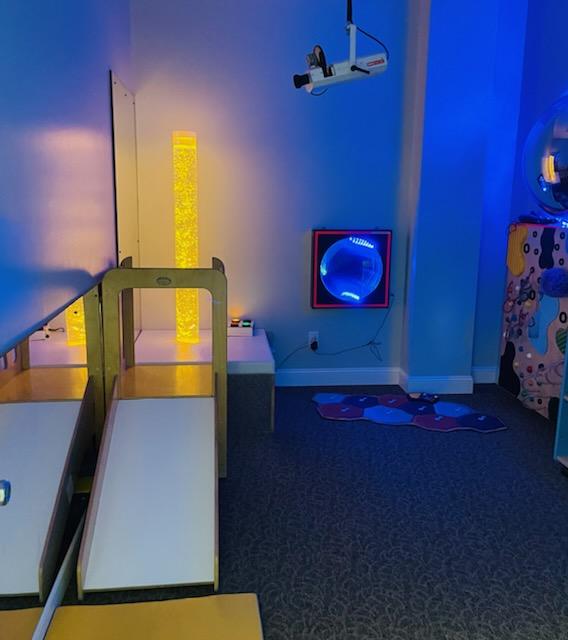Sensory Processing Disorder
Sensory Processing refers to how our nervous system takes in sensory information from the environment and from our bodies and organizes an appropriate response. For example, if we smell smoke and see fire, we would immediately respond with a plan of action to escape. If we are sitting at a desk working and hear a truck rumble by outside, we may momentarily notice it and then disregard it once our brain has determined that the event is not relevant. In normal sensory processing, many parts of the nervous system work together to take in, evaluate and respond to sensory stimuli. The process is constantly occurring and happens automatically.
Sensory Processing Disorder (SPD) is a term used to describe a mismatch between a sensory stimuli and our response. Such a mismatch can occur in any sensory system. SPD causes children to process sensory input in an inaccurate way which leads to unexpected responses that can cause difficulties in a child’s daily life and be very puzzling to the adults around them. SPD is a complex, often hidden neurological disorder which can have a tremendous impact on learning, self-esteem, and quality of life for the child and family affected.
SPD is an umbrella term that describes a general disorder that has several subtypes. Certain common behavior patterns may indicate a specific subtype:
Over-Responsive
Some children are over-responsive to normal sensory input. Their nervous systems may feel sensation too intensely and consequently respond inappropriately. For example, a light touch on the shoulder by a child’s teacher may actually be perceived as a shove and the child may startle or act out in a manner not consistent with the input.
Over-Responsive children are constantly on guard and may feel that they are being continuously bombarded by their environment. Often these children are sensory defensive and may exhibit fight or flight responses to normal inputs.
Under-Responsive
Some children are under-responsive to sensation. Their nervous systems may not always register information that is coming into the brain. Some of these children may need more intense sensory experiences in order to feel them and will seek them out in a manner that seems excessive and may actually appear hyperactive. Other children who are under-responsive may actually appear lethargic and slow to get started. Under-responsive kids may seem unaware of touch or pain sensations. Sometimes they use too much force when playing and can appear aggressive.
Motor Coordination Problems
Some children do not receive accurate sensory feedback from their muscles and joints. They have a poor sense of body awareness and may have trouble learning and executing new movements such as handwriting, kicking a ball, or tying a shoe. These children may appear clumsy, awkward, and accident prone compared to typical peers.
Can Occupational Therapy Benefit a Child with SPD?
Occupational Therapy is very helpful to children with SPD. Some children may have one or more subtypes of SPD or may fluctuate between over and under responsiveness. SPD also occurs within a range from mild to severe impairment of functional participation in daily activities. Evaluation by a trained occupational therapist can help to determine the nature and scope of SPD for a particular child and can help a family reframe puzzling behaviors and understand the child in a different light.
Occupational Therapy treatment for SPD focuses on targeting specific sensory and motor experiences to help change the nervous system to produce more normalized responses to sensation. Treatment is child-directed and play oriented. The therapist is responsible for structuring the experience to provide a just-right challenge in the context of a safe, fun and playful atmosphere. The therapist can also help parents and teachers set up appropriate sensory opportunities and experiences in the child’s environment.
The main goal of treatment is to help a child cope with the makeup of his particular nervous system. Over time, some children may no longer exhibit sensory processing difficulties while others will need to cope with these differences in their nervous systems for a lifetime. Occupational Therapy can be very helpful in minimizing the issues associated with SPD.
Occupational Therapy for SPD Strives to Achieve:
Improved sensory processing leading to more organized behaviors and improved emotional adjustment
- Improved motor coordination
- Improved self-esteem and social skills
- Improved functional participation in daily life activities
- Quality of life improvements
- Child spending more time in a state of calm alertness, ready for learning
- Increased attention and decreased distractibility
- Decreased anxiety and increased comfort in the environment
- Improved performance in a variety of skills and increased independence


